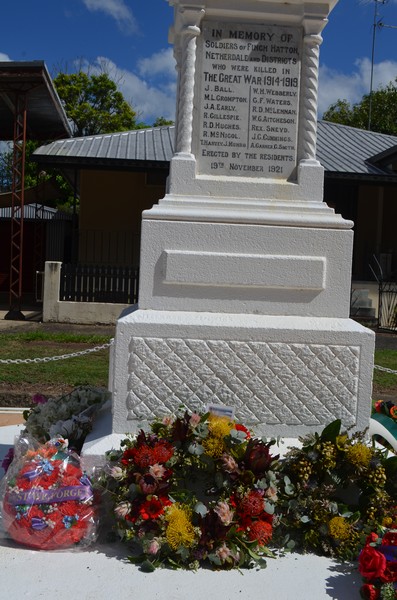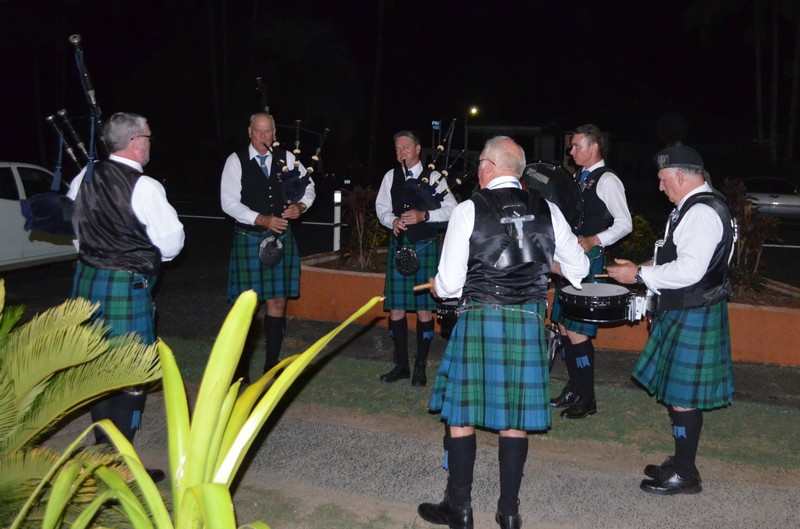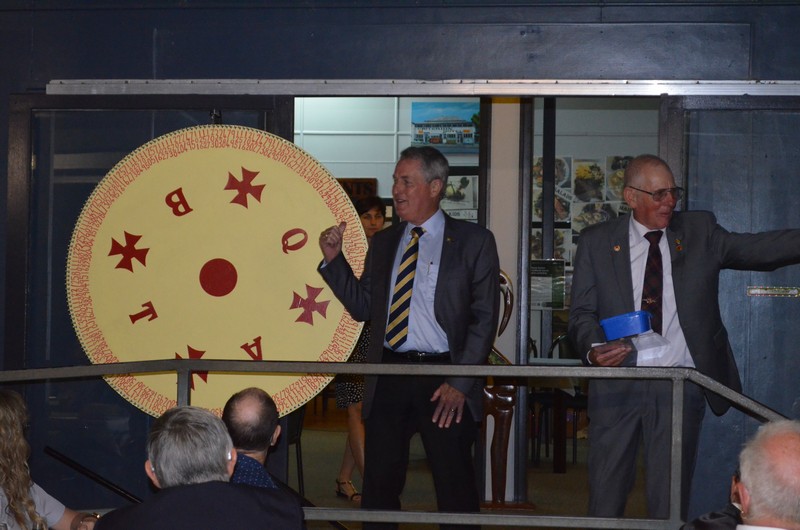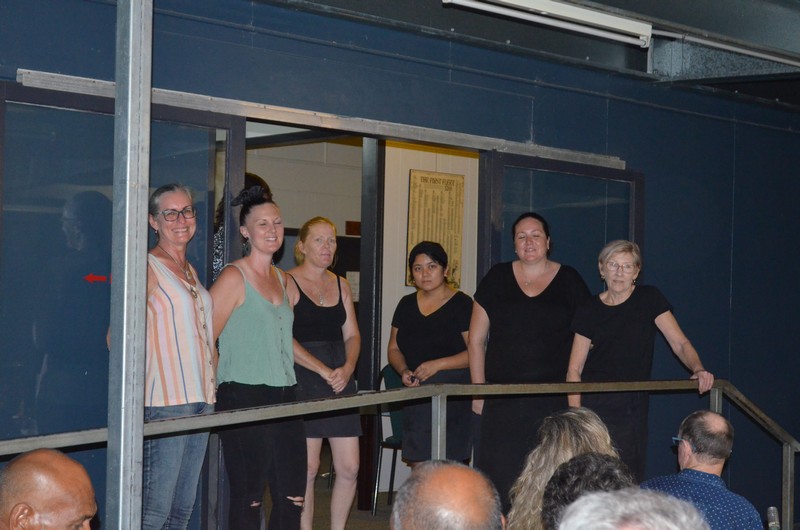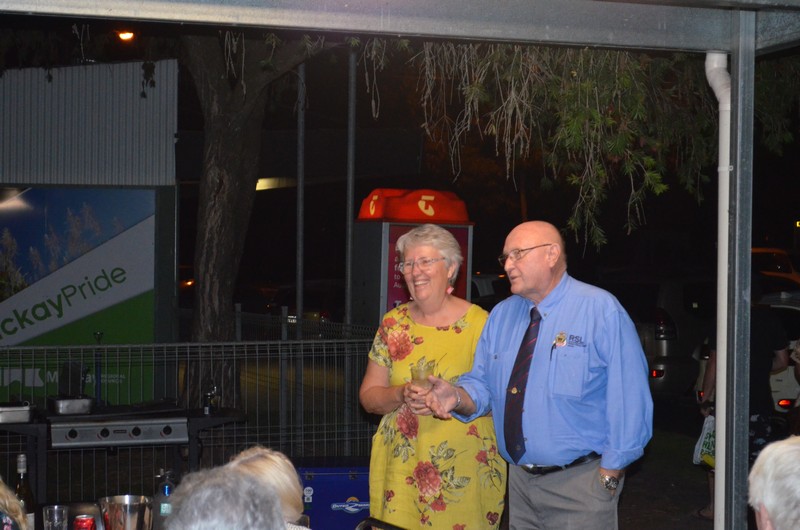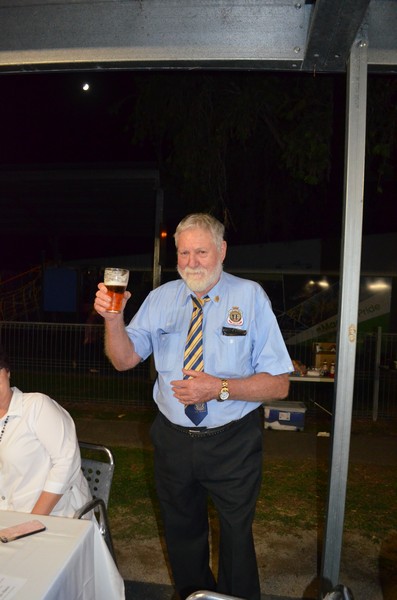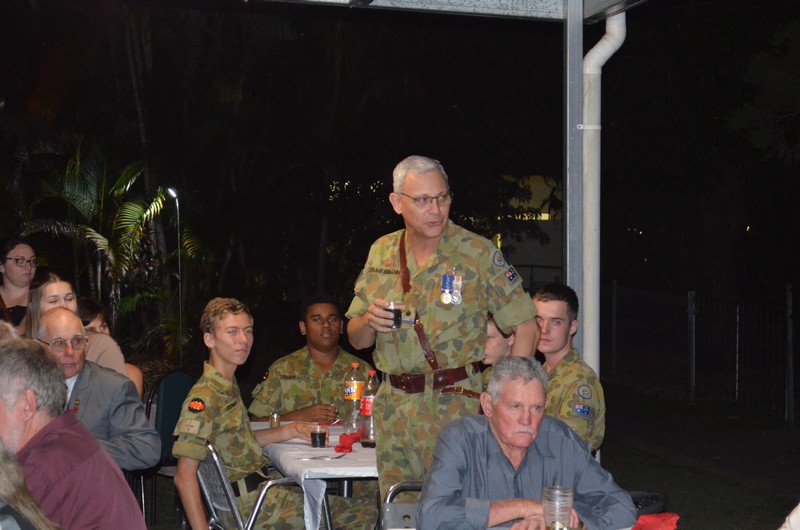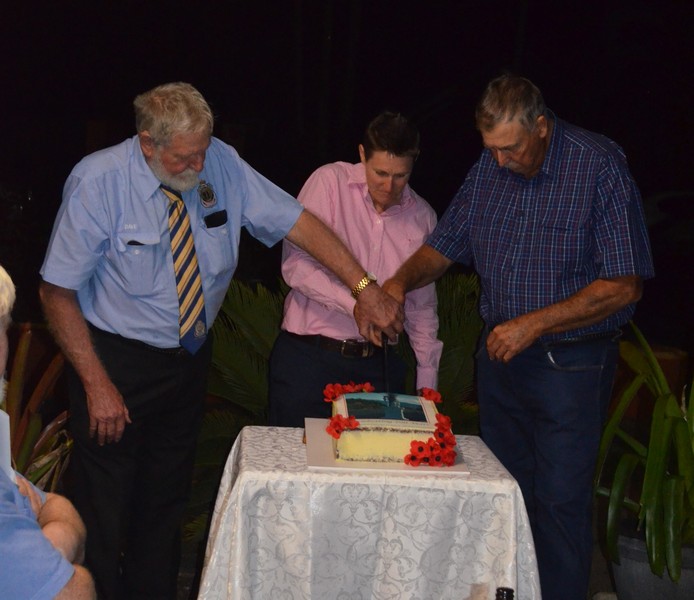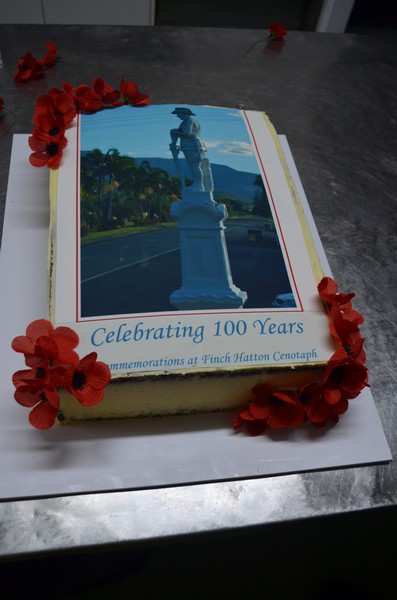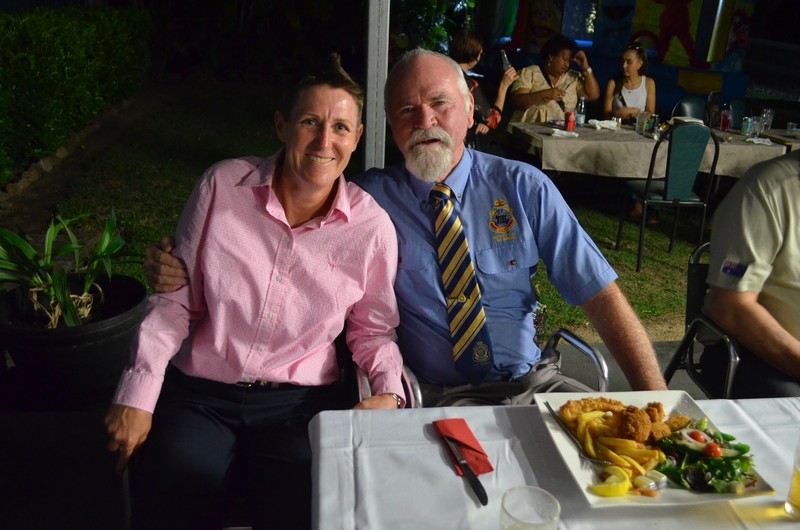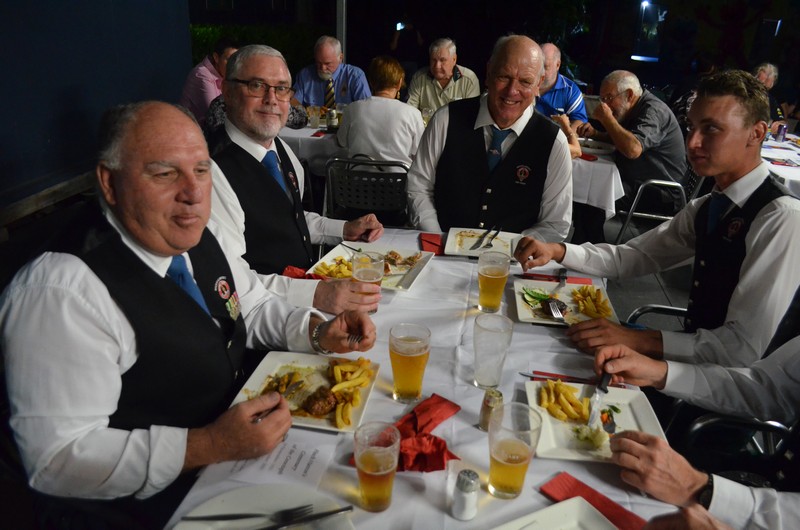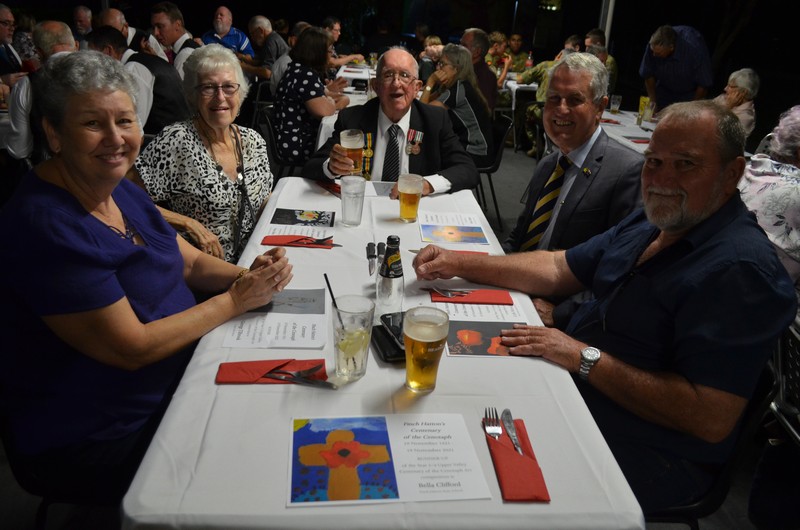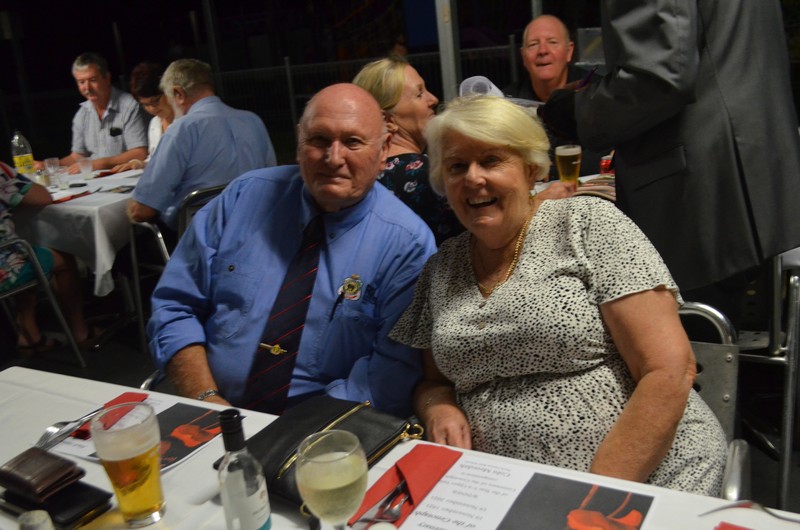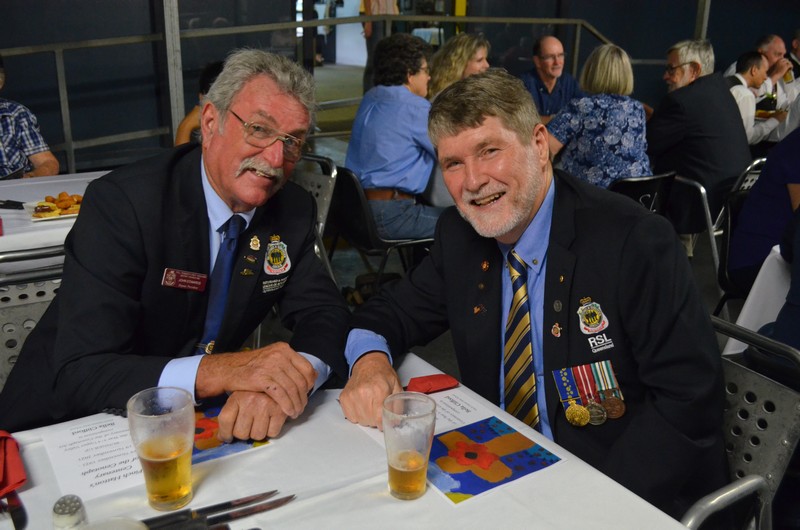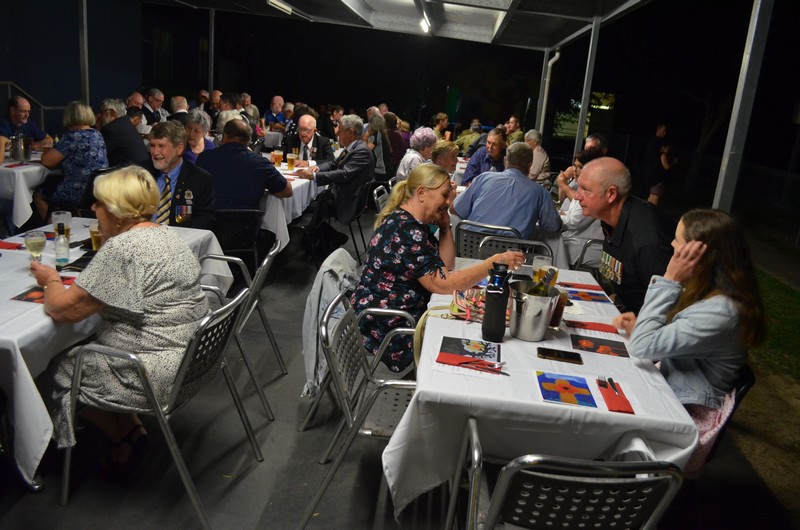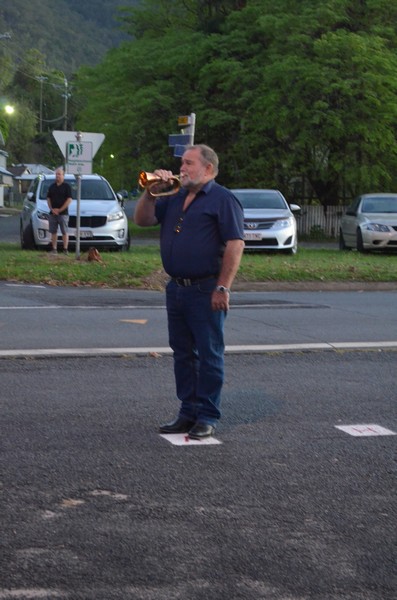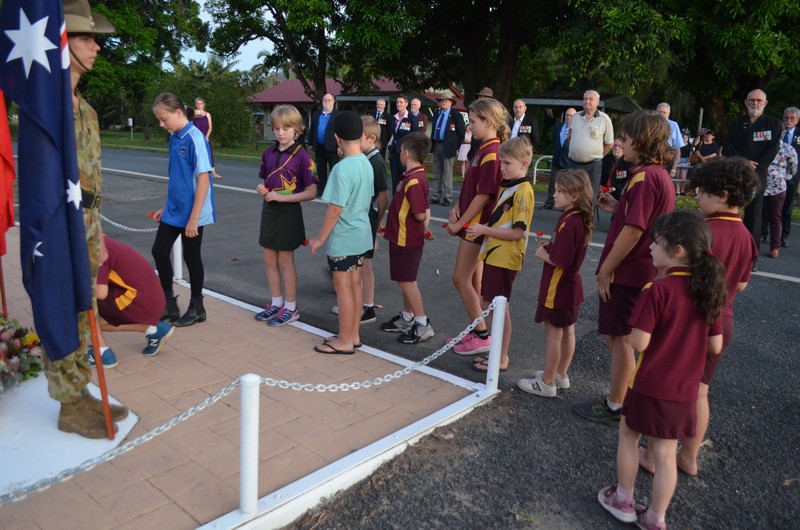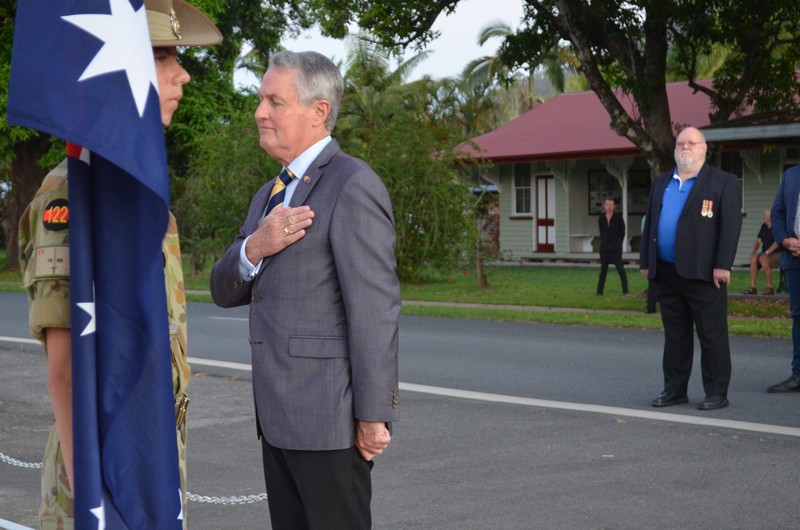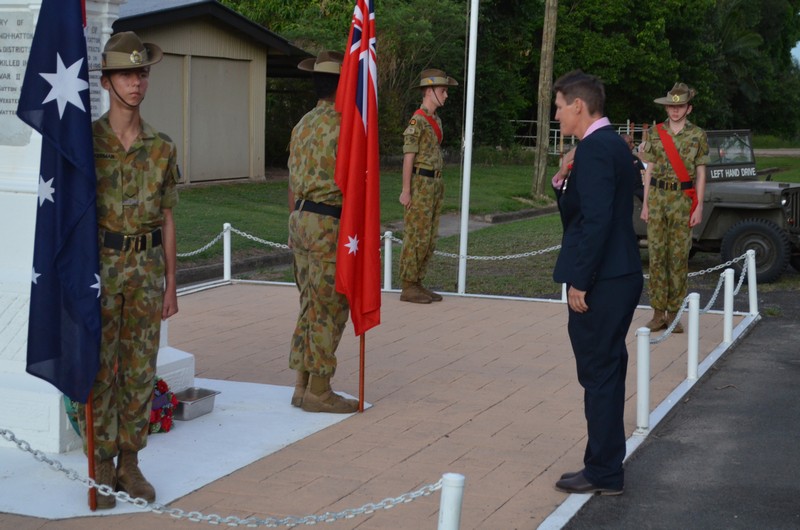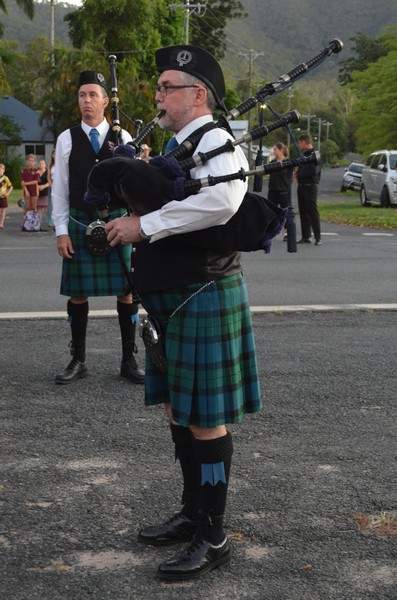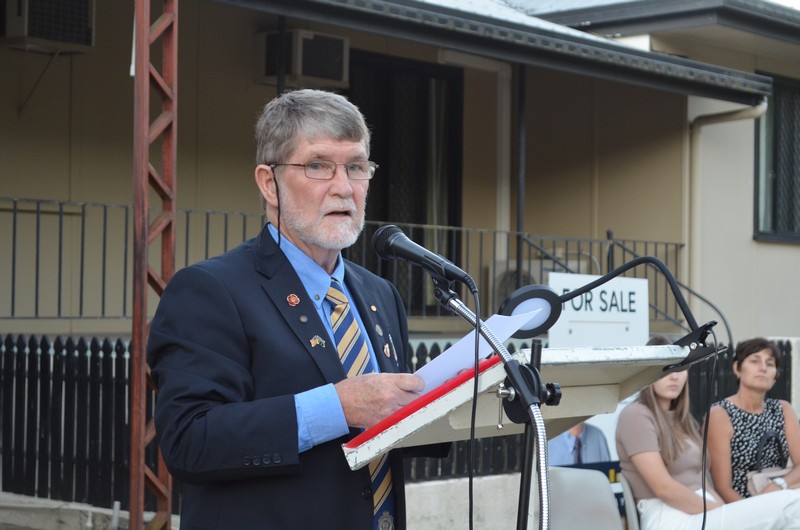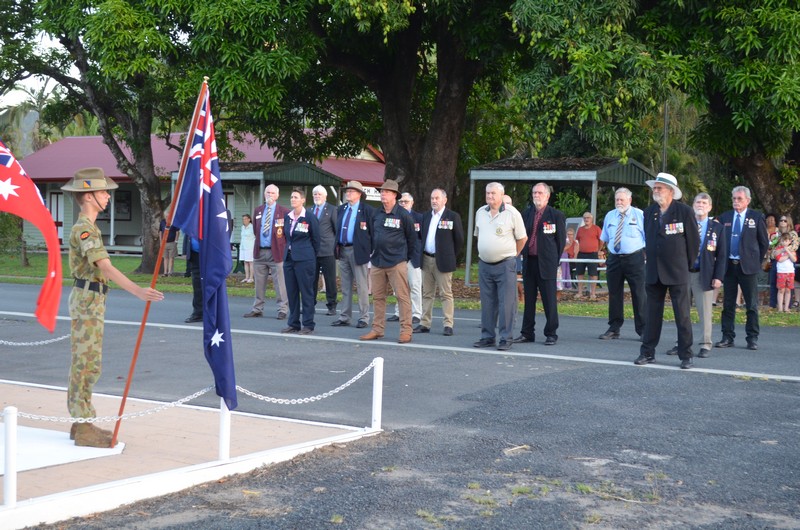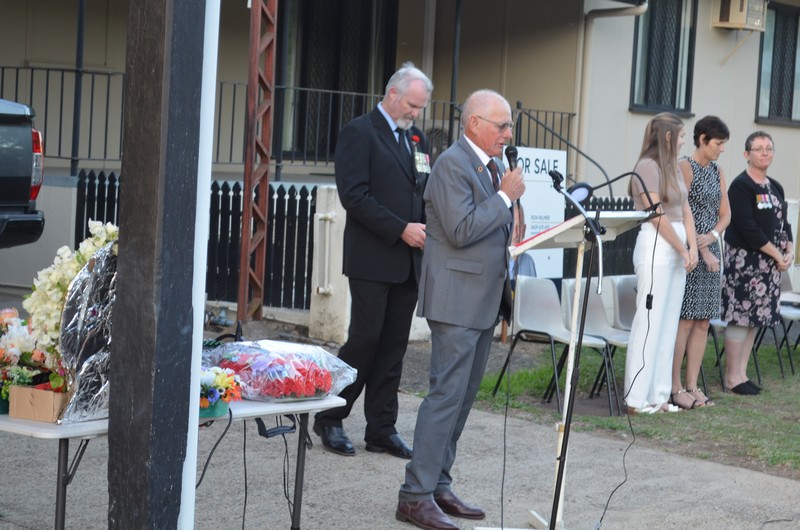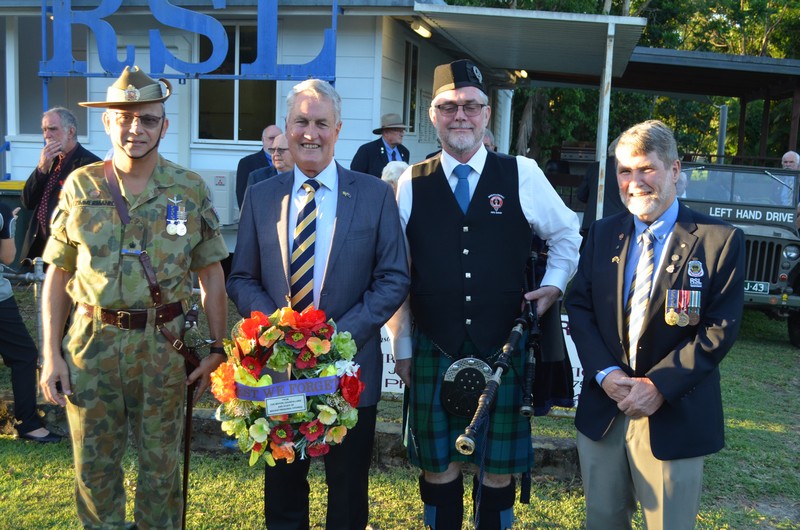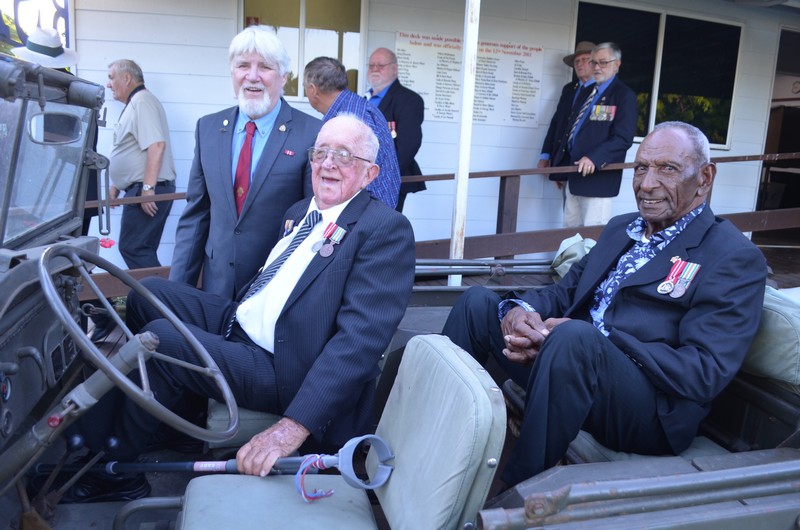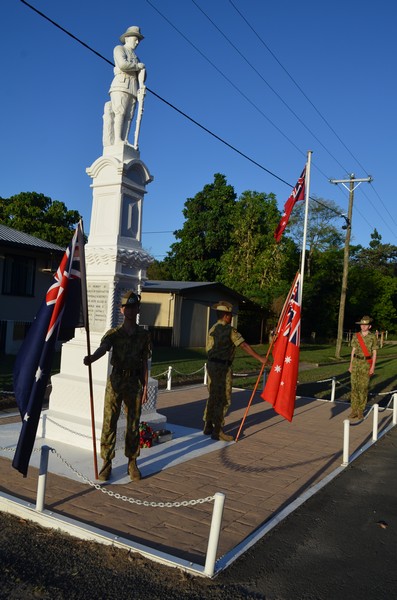Before the 1914-18 1st World War, Australia and in particular Queensland, had few civic monuments.
Given the fact that this cenotaph was erected on 19 November 1921, 3 years after the 1st World War ended in 1918, it is remarkable that we are here today on the 19 November 2021 commemorating the centenary of this beautiful sandstone memorial which stands proud here in the main street of Finch Hatton.
When I was invited to this service, it made me wonder about why and how this cenotaph came into being and what the digger statue, which stands guard at the top, could tell us, if only it could talk. Speakers who follow me today may be able to answer some of those questions.
The why however is answered when we consider that there has been no greater tragedy in Australia’s history than World War 1. Casualties were over 61,000 killed with 156,000 wounded, gassed, or taken prisoner. Australia only had a population of 4.8 million at the time. It consumed the young, the very best from the Finch Hatton community and those around Australia. It destroyed a generation. Even those who survived were scarred for life. It was one of the most unimaginable losses to our young Australian nation.
It is only when we comprehend our casualty figures from the Great War, that we begin to understand the sacrifices the original ANZACS and their families made for our country, and why there is an endless crop of memorials like the one here in Finch Hatton, that sprang up after the war in all towns and cities throughout the land.
Bill Gammage compellingly captured the aftermath of this war and I quote:
“Dreams abandoned,
Lives without purpose,
Women without husbands,
Families without family life,
One long funeral for a generation and more after 1918”
There would not have been a family in the Finch Hatton community untouched by the tragedy of World War 1. All Australian communities grieved following the loss of so men and women. Those original ANZACS who returned also grieved the loss of their mates.
Families had no closure as they never had a grave to visit as their loved ones lay in foreign countries or in the embrace of the oceans of the world. Many graves were unmarked, and many family members would never get the opportunity to visit the graves of their loved ones in far off lands.
So the original ANZACS who returned to Finch Hatton after the war and the community decided to construct this cenotaph as a place of remembrance and reflection for those who lost loved ones. It became a sacred place for Finch Hatton family members and others to come and grieve.
It seems clear to me that his community project became the impetus for the establishment of the Finch Hatton RSL Sub Branch in 1926.
As most of you will already know, the RSL today is an iconic organisation within our nation’s social fabric and very much a part of Australia’s history and DNA.
Today, the RSL, in its constitution, lists 8 objectives, and primarily provides welfare services to veterans and members and their families who served and survived their service.
However, an equally important objective is and I quote:
“to preserve the memory and records of those who have suffered and died for Australia, erect monuments to their valour, provide them with suitable burial places, and establish and preserve, in their honour, the annual commemoration days known as ANZAC Day, Remembrance Day and other commemorative days;” unquote.
This cenotaph and the Finch Hatton RSL Sub Branch over time has also become a very important part of the social fabric of the Finch Hatton community, its history, and its DNA. In time the cenotaph has also become the centre piece for the ANZAC Day and Remembrance Day commemorative services held each year.
I commend the current members of the RSL Sub Branch and the Finch Hatton community for planning and running this important commemorative function today. You have followed in the footsteps of your forefathers and mothers who saw the need for this special memorial back in 1921. On this anniversary, you have seen and acknowledged the part your cenotaph and the RSL Sub Branch plays in the remembrance and commemoration of those from your community who gave their lives for our nation and those who returned and have since passed on.
Their names are written on the cenotaph and will liveth for evermore. They gave their tomorrows for out todays.

